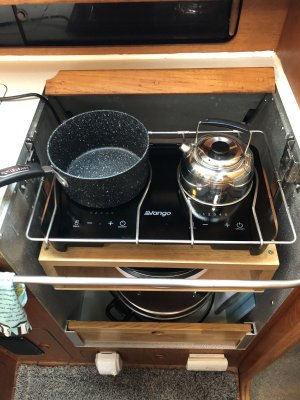Aja
Well-Known Member
An anagram of 'Govan'Induction hobs - We cannot run ours at maximum - our inverter is too small. But even with the 1500 watt inverter the hob works and is invaluable (for all the reasons people use indiction hobs). I believe the camping company Vango make a 'low power' induction hob more suitable for smaller inverters and it, the Vango Hob, has been the subject of posts here, or on PBO. I think there might even be a double hob...?
I'm sure we could buy a Vango hob (at considerable expense) here - but we just bought one from Temu (as they are all probably made in China anyway)
Maybe, surely, someone local, ie UK based, knows more than a distant colonialistof Vango products.
Jonathan

